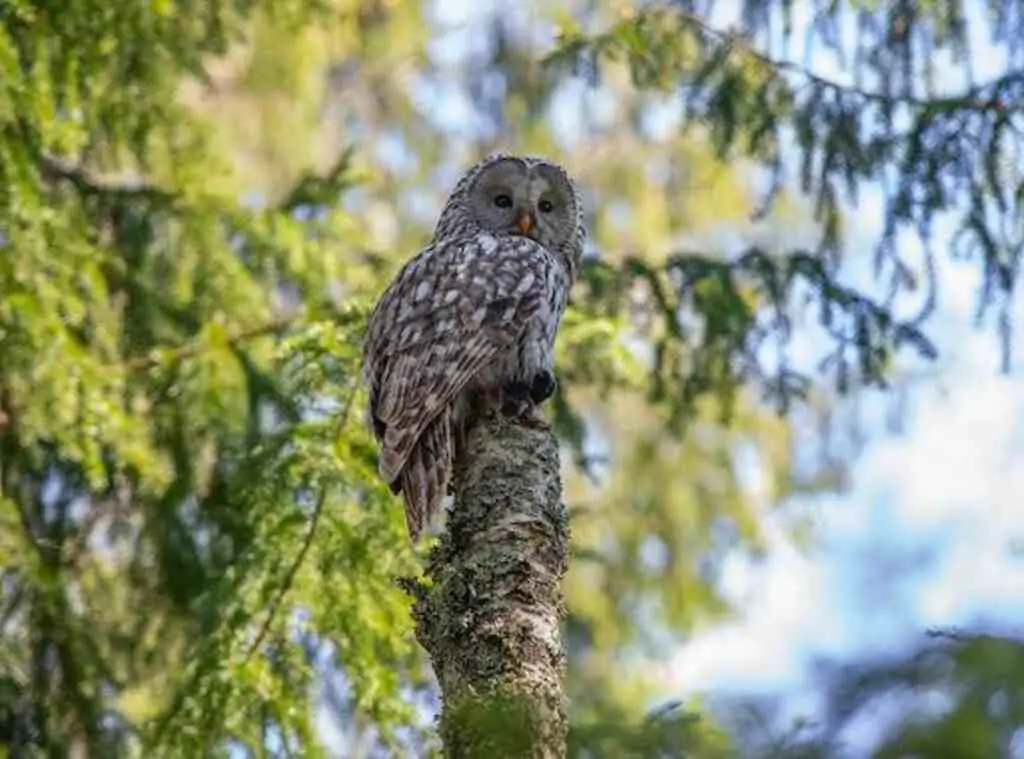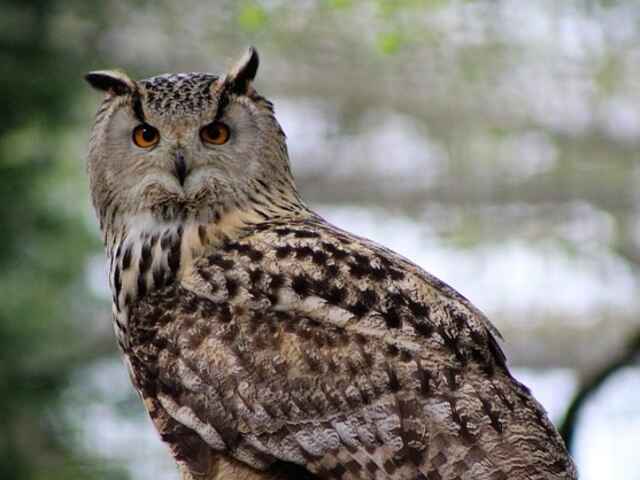Do Owls Eat Rats? The short answer is yes, and they are pretty good at it too. But did you know that owls play an important role in rodent control?
In this article, we’ll dive into the fascinating world of owl behavior, hunting techniques, and how they help maintain the delicate balance of our ecosystem.
So, if you’ve ever wondered what makes owls such efficient predators or how they fit into the food chain, keep reading.
Table of Contents
An Introduction to Owls and Their Diet
Owls are intriguing creatures that have long fascinated humans with their striking appearance and mysterious behavior. These nocturnal birds of prey are known for their silent flight, sharp talons, and keen eyesight, which enable them to hunt successfully in the dark.
But what do owls eat? And why are they such important predators in their ecosystem?
Owls have a diverse diet that varies depending on where they live, their size, and the time of year. Some species of owls prefer insects or small mammals like mice and voles, while others hunt larger prey like rabbits or even other birds.
Regardless of what they eat, all owls share certain characteristics that make them successful predators. One of these features is their specialized beaks and talons.
Owls have curved beaks that allow them to tear apart flesh easily, while their strong talons can grip tightly onto prey without causing harm to the owl’s claws.
Additionally, owls have binocular vision that allows them to see in 3D, as well as an ability to turn their heads almost 360 degrees, giving them a wide field of view.

The Importance of Owls as Predators
Owls play a crucial role in maintaining the balance within many ecosystems by acting as top predators. They help keep populations of rodents like rats under control by eating large numbers regularly.
This is especially important because rats can cause significant damage by spreading disease and damaging crops. Without natural predators like owls keeping rodent populations in check, there would be serious consequences for both humans and other animals alike.
Increased rat populations could lead to more disease outbreaks among humans or other wildlife species whose food sources may be affected by an increase in rodent numbers. Moreover, because rats breed quickly and have short lifespans, predator control of their population is necessary to maintain balance within the ecosystem.
Therefore, owls and other predators like them are essential for the health of many ecosystems. Owls are fascinating predators that play a critical role in controlling rodent populations and maintaining balance within many ecosystems.
Their diverse diet and unique adaptations make them an important study subject for biologists and bird enthusiasts alike. In the following sections, we will explore the relationship between owls and one of their most common prey items: rats.
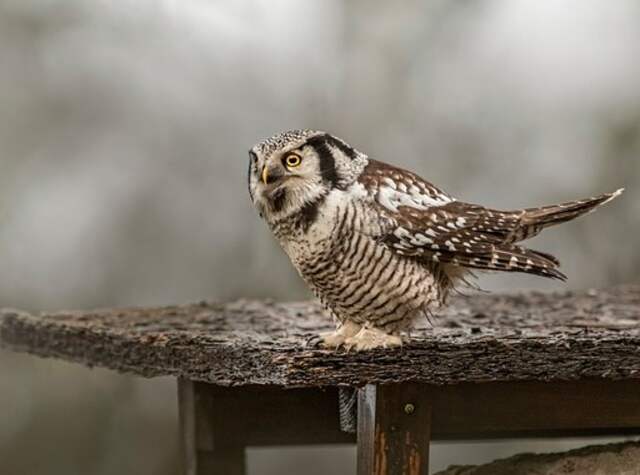
Owls and Rats: The Relationship
How Owls Hunt for Rats
Owls are nocturnal hunters and have adapted their hunting techniques to suit their lifestyle. They mainly rely on their excellent sense of hearing and eyesight to locate prey, including rats. Owls have large eyes that allow them to see in low-light conditions, making them expert night hunters.
They can also rotate their heads up to 270 degrees, which gives them a wide field of view without having to move their body. This makes it easier for owls to spot rats from a distance.
Once an owl spots a rat, it uses its sharp talons or claws to catch the prey. Owls have four toes on each foot, with two toes facing forward and two facing backward.
This allows them to grip onto branches or prey tightly as they swoop down from above. When capturing a rat, they use one foot to grab onto the rodent’s head or neck while using the other foot for support.
Types of Rats That Owls Eat
Owls feed on a variety of rodents, including different species of rats such as brown rats, black rats, and woodrats.
Brown rats (Rattus norvegicus) are the most common type of rat in urban areas and are also known as sewer rats or Norway rats.
Black rats (Rattus rattus), also called roof rats or ship rats, live mostly in coastal regions and can be found in attics or roofs of buildings.
Woodrats (Neotoma spp.) are arboreal rodents that build nests out of sticks and debris high up in trees or bushes. These types of rodents are usually found in rural areas but provide an excellent food source for owls living nearby.
Why Rats Are a Common Prey for Owls
Rats are a common prey for owls because of their abundance in urban and rural areas. Rats are notorious for their ability to reproduce quickly, making them one of the most successful rodent species worldwide.
They also have a high tolerance for living in close proximity to humans, which means that they can be found in large numbers near human settlements.
Owls rely heavily on rats as a food source, especially during the breeding season, when they need more energy to raise their young. In some cases, rats can make up more than 50% of an owl’s diet.
By controlling rat populations, owls help prevent the spread of rat-borne diseases and reduce damage to crops caused by these pests. Owls and rats share a unique relationship where one species relies on the other for survival.
Owls have adapted their hunting techniques to capture rats efficiently, while rats provide a much-needed food source for these birds of prey.
Understanding this relationship is essential for maintaining balance within ecosystems and preventing ecological imbalances caused by an overpopulation of rodents such as rats.
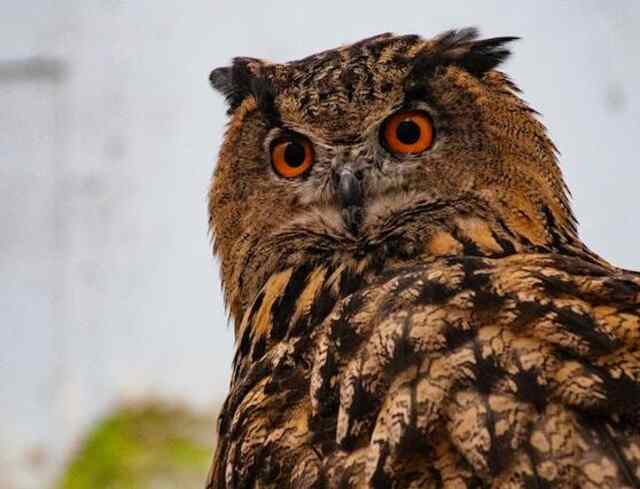
Owl Digestion and Rat Consumption
How an Owl’s Digestive System Works
Owls have a unique digestive system that allows them to efficiently break down their food. After an owl ingests its prey (in this case, a rat), the food enters the stomach where it is stored temporarily.
However, unlike many other animals, owls do not have teeth to help break down their food. Instead, they swallow their prey whole or tear it into smaller pieces before swallowing.
Once the rat reaches the stomach, it is exposed to strong digestive enzymes that help break down proteins and fats.
The acidic environment of the owl’s stomach also helps to neutralize any harmful bacteria that may be present in the prey.
From there, the partially digested material moves on to the gizzard, where it is further broken down by muscular contractions and small stones or grit that owls swallow intentionally.
These stones act as natural teeth for owls and help grind up tough pieces of prey like fur and bones.
What Happens When an Owl Eats a Rat
When an owl consumes a rat, several things happen inside its body. First, because rats are high in fat content compared to other prey items like insects or birds, it takes longer for an owl’s digestive system to process them fully.
This means that owls may not need to eat as frequently when they consume rats because they provide more calories than other types of prey.
Secondly, because rats are often covered in fur or feathers which can be difficult for owls to digest properly without assistance, owls regurgitate pellets containing these indigestible materials after digestion has taken place.
These pellets can often be found near owl roosting sites and can provide valuable information about what types of animals are being consumed by local populations.
The Nutritional Value of Rats for Owls
Rats are a nutritious food source for owls, providing them with essential nutrients like protein, fat, and minerals. In fact, rats are often considered a preferred prey item for some owl species because they offer such high nutritional value.
The nutritional content of rats can vary depending on the species and age of the rat being consumed. Young rats tend to be higher in protein content than older rats, while older rats may have more fat content due to their sedentary lifestyles.
Overall, the nutritional value of rats makes them an important food source for owls in many ecosystems. Without access to this prey item, owl populations could suffer from malnutrition or lower reproductive success.

Owl Adaptations for Rat Hunting
Unique Physical Features that Help Owls Catch Rats
Owls have several unique physical features that allow them to effectively hunt and catch rats. One of the most prominent features is their large eyes.
Owls have binocular vision, which means that their eyes are positioned in such a way that they are able to focus on a single object with both eyes simultaneously.
This gives them exceptional depth perception, which is especially useful when hunting in low light conditions such as at dusk or dawn, when rats are most active.
In addition to their large eyes, owls also have excellent hearing capabilities. Their ears are positioned asymmetrically on either side of their head, which allows them to detect sounds coming from different directions with great accuracy.
This is particularly helpful when hunting for rodents like rats that may be hiding in dark crevices or moving stealthily through grass or underbrush.
Another unique physical feature of owls that helps them catch rats is their powerful talons. These sharp claws are capable of grasping and holding onto prey tightly without letting go, even if the prey struggles or attempts to escape.
Owls also have sharp beaks that they can use to tear apart and eat small prey like rats.
Behavioral Adaptations That Aid in Rat Hunting
In addition to their physical adaptations, owls also exhibit certain behavioral adaptations that enable them to effectively hunt for rats. One such adaptation is silent flight. Owls have specialized feathers on their wings and body that help reduce noise as they fly through the air.
This allows them to sneak up on unsuspecting prey like rats without being detected. Another behavioral adaptation is patience.
Unlike some predators who move quickly and actively hunt down prey, owls tend to perch silently and wait for their prey to come within striking distance before pouncing on it with lightning-fast reflexes.
This allows them to conserve energy while waiting for their next meal and also increases their chances of successfully catching prey.
Owls are also known for their territorial behavior. They tend to inhabit a specific area and defend it against other predators, including other owls.
This means that they become intimately familiar with the habits and movements of the prey in their territory, including rats. They learn where rats tend to hide, how they move through the landscape, and when they are most active.
This knowledge helps them become even more effective hunters. Owls have a variety of unique physical features and behavioral adaptations that allow them to effectively hunt for rats.
Their large eyes, asymmetrical ears, powerful talons, sharp beaks, silent flight, patience, and territorial behavior all work together to make them highly skilled rat hunters in their respective habitats.
Understanding these adaptations can help us gain a greater appreciation for these amazing creatures and the important role they play in balancing ecosystems as top predators.

Fun Facts about Owls and Rat Eating Habits
The Love-Hate Relationship Between Owls and Rats
Owls rely heavily on rats as a food source, but their relationship is more complicated than that of predator and prey. Rats are known to be highly adaptable and intelligent animals that can avoid predators by living in urban areas, burrowing underground, or hiding in trees.
However, owls have adapted their hunting tactics to overcome these obstacles. Interestingly, owls are not the only birds that prey on rats. Other bird species such as hawks, eagles, and crows also feed on rats.
However, owls are unique in their ability to fly silently due to special feathers that reduce noise levels during flight. This stealthiness makes them particularly effective hunters of rats.
When Owls Hunt for Rats
Owls are nocturnal predators and prefer to hunt at night when rats are most active. They use their keen sense of hearing to locate rats rustling through vegetation or scurrying along the ground. Once they have located their prey, they swoop down silently from above and grab the rat with their talons.
However, not all owl species hunt exclusively at night; some species such as the snowy owl hunt during the day when their prey is active in daylight hours.
Where Owls Hunt for Rats
Owls can be found all over the world in various habitats including forests, grasslands, deserts, suburbs and even cities. Different owl species have different habitat preferences depending on their food sources and nesting requirements.
Ground-dwelling rat species such as Norway rats tend to live in urban environments, where buildings provide cover from predators. As a result, owls can often be found perched atop buildings waiting for an opportunity to catch a rat off guard.
How Often Owls Hunt for Rats
The frequency of owl hunting depends on a variety of factors including the location, season, and availability of prey. Some owl species such as the barn owl can consume up to 1,000 rodents in a single year with a family of two adults and their offspring.
However, other species such as the great horned owl will switch to other prey items when rats are scarce. Interestingly, owls have been known to cache their prey by storing it in a hidden location until they are ready to eat it. This helps them conserve energy by allowing them to hunt less frequently.
The Nutritional Value of Rat for Owls
Rats are high in protein and fat, which make them an ideal food source for owls. They also contain important nutrients such as vitamins B12 and D which help keep owls healthy and strong.
In fact, young owls require a diet high in protein and calcium for healthy growth and development. While the relationship between owls and rats may seem simple at first glance, it is actually quite complex.
Owls have adapted their hunting tactics to overcome the challenges posed by rat behavior while relying heavily on these small mammals for sustenance.
Understanding this relationship is crucial for understanding the delicate balance of nature that exists all around us.
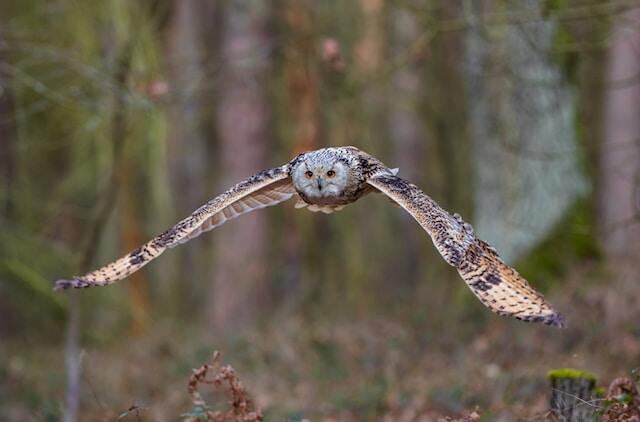
Conclusion
Summary of the Main Points Discussed in the Article
In this article, we have explored the relationship between owls and rats. Owls are skilled predators that play a crucial role in controlling rodent populations.
They typically hunt for rats at night when they are most active and use their unique physical features and behavioral adaptations to catch them. The nutritional value of rats for owls is high, making them an essential part of their diet.
We have also discussed the digestive system of owls and how it works to break down food, including rats. Additionally, we explored some lesser-known facts about owl and rat eating habits, such as how often and where they hunt for rats.
Final Thoughts on the Importance of Understanding the Relationship Between Animals in Nature
The relationship between animals in nature is complex and interconnected. Understanding these relationships is vital to maintaining healthy ecosystems.
Predators like owls help control rodent populations, which can prevent damage to crops and other vegetation. It’s essential to recognize that all species have a place in nature’s web, whether they are predator or prey.
While it may be difficult for some people to accept that one animal eats another, we must remember that this is natural behavior that has been happening for millions of years.
As humans continue to impact our environment through pollution, habitat destruction, and climate change, it’s more important than ever to appreciate the intricate balance of nature.
By supporting conservation efforts and promoting sustainable practices, we can help ensure that animals like owls continue to thrive in their natural habitats. Studying animal behavior helps us understand our planet better.
Owls’ diet serves as an excellent example, since these birds play a crucial role in controlling pest populations naturally while providing humans with many benefits.
Let us appreciate our planet’s incredible diversity by supporting conservation efforts worldwide!
FAQs: Do Owls Eat Rats?
Are rats scared of owls?
Yes, rats are naturally afraid of owls. The mere presence of an owl, even if it’s just a decoy, can keep rats away.
What animal eats a rat?
Many animals eat rats, including snakes, cats, dogs, birds of prey, and some species of owls.
What animals keep rats away?
Animals that keep rats away include cats, dogs, ferrets, and certain breeds of terriers. Additionally, some birds of prey and owls can be effective at deterring rats.
What is the best owl for rat control?
Barn owls are considered the best species of owl for rat control. They are nocturnal and highly skilled at hunting rodents, with a single owl capable of catching and consuming up to 1,000 rodents in a year.
What animal are rats most afraid of?
Rats are most afraid of predators that pose a threat to their survival, such as cats, dogs, and birds of prey like owls. The mere presence of these predators can keep rats away.
Is it good to have owls around your house?
Yes, having owls around your house can be beneficial, as they can help control rodent populations and provide a natural form of pest control. Additionally, owls are fascinating creatures to observe and can be a source of enjoyment for nature enthusiasts.
What animal kills the most rats?
Barn owls are considered the most efficient predators of rats, with a single owl capable of killing up to 10 rats in a single night. Cats are also effective rat hunters and have been known to kill dozens of rats in a single day.

